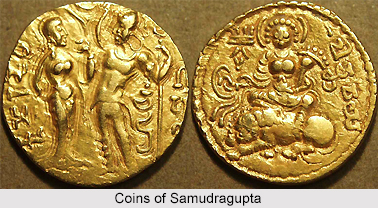 History of Purnia District portrays the earliest inhabitants of the Purnia district were the Anas of the west and Pundras of the east. The former are generally grouped with the Bengal tribes in the epics and formed the easternmost tribes known to the Aryans. The Pundras were regarded as the descendants of the sage Vishwamitra.
History of Purnia District portrays the earliest inhabitants of the Purnia district were the Anas of the west and Pundras of the east. The former are generally grouped with the Bengal tribes in the epics and formed the easternmost tribes known to the Aryans. The Pundras were regarded as the descendants of the sage Vishwamitra.
Ancient History of Purnia District
The Pundra land has been bordered by the river Kasataya on the east by the modern Mahananda River on the west, on the south by the modern Padma, and on the north by the hills, which were inhabited by aboriginal hill tribes, such as the Kiratas. The struggle and the conquest of the Kiratas are talked about. Even the Kirata women from the Morang or Tarai are said to have been the wife of Raja Virat. According to Mahabharata, King Virat had given shelter to Yudhisthir and the four Pandavas during the 12 yrs of exile. The site of his fort is still pointed out at Thakurganj in the north of the district.
During the time of Lord Buddha, Purnia was annexed by Bimbisara, the ambitious ruler of Magadha. Later, the district formed a part of the empire of the Imperial Gupta Empire, which extended as early as the reign of the Samudragupta (Circa AD 340) to Kumarupa (Assam) and Samatata (East Bengal) on the east. After the invasion of the Huns, the Gupta Empire was shattered. The district thus passed into the hands of Baladitya, the King of Magadha. The later in alliance with other kings and in particular Yasadharman of central India defeated and captured the Hun King, Mihiragula. Mihiragula later killed the Vajra`s son on Baladitya and extinguished the family of the Duttas of Pundra- Vardhana.
Medieval History of Purnia District
At the beginning of the seventh century, the district was ruled by the Sasanka, the mighty king of Aauda, who reined North and South Bihar as well as Central Bengal. He was a devotee of Lord Shiva and was against Buddhism. In AD 620 Harshavardhana, the great Buddhist emperor defeated Sasanka during the course of his conquest of northern India. After the death of Harsha, the empire was dismembered, and it seems likely that Purnia became part of the Magadha kingdom under Adityasena. During 9th to 12th century the dynasty was under the Pala king, and on the decline became subject to the Sena dynasty.
During the rule of the Mughal Dynasty, Purnia formed a great military frontier province under the rule of a faujdar, who was nominally subordinate to the Subedar. The greater part of Purnia was held in Jagir for the maintenance of himself and his troops. From the Ain-i-Akbari, it appears that the present district was included in Sankar Tejpur, east of the Mahananda River and Sarkar Purnia, west of the river.
Modern History of Purnia District
The early years of British rule were years of trouble for Purnia. The district suffered terribly during the great famine of 1770. By 1771, a number of Europeans had settled in the area known as Rambagh, the only building left in Rambagh was the church and the priests` houses. The Roman Catholic Church was dismantled and re-erected in the new station of Purnia where the Europeans had already set up their residences. The foundation of this new church was there until 1934, when it was badly affected by the Bihar earthquake.
Purnia district had been promptly affected by the Swadeshi Movement in the first decade of the 20th century. At that time there were no facilities for higher education in Purnia district and the students who sought higher education had to go to Kolkata or to Patna. The Bihar National College and TK Ghosh Academy were suspected as the two centers for a secret student`s organization, which indulged in agitation.
Since 1919, Purnia had closely followed the policy, aims and objectives of the Indian National Congress. Some of the delegates of Purnia attended the Nagpur session of Congress in 1920 and the moment Mahatma Gandhi gave the call for the Non-Cooperation Movement, there were a number of volunteers in this district. In 1921, a national School was started in Katihar. Shri Rajendra Prasad visited Purnia district in 1921 and addressed meetings at Purnia and at other places. In 1942 Quit India Movement tactics were fully implemented by the people of Purnia. Mahatma Gandhi visited Purnia in 1929, during which time he met the Raja of Nazargunj and addressed crowded meetings at various places including Kisahnganj, Bishnupur, Araria and Purnia. The survey and settlement operations in Purnia district commenced in 1952 and settlement operations were concluded in 1960.






